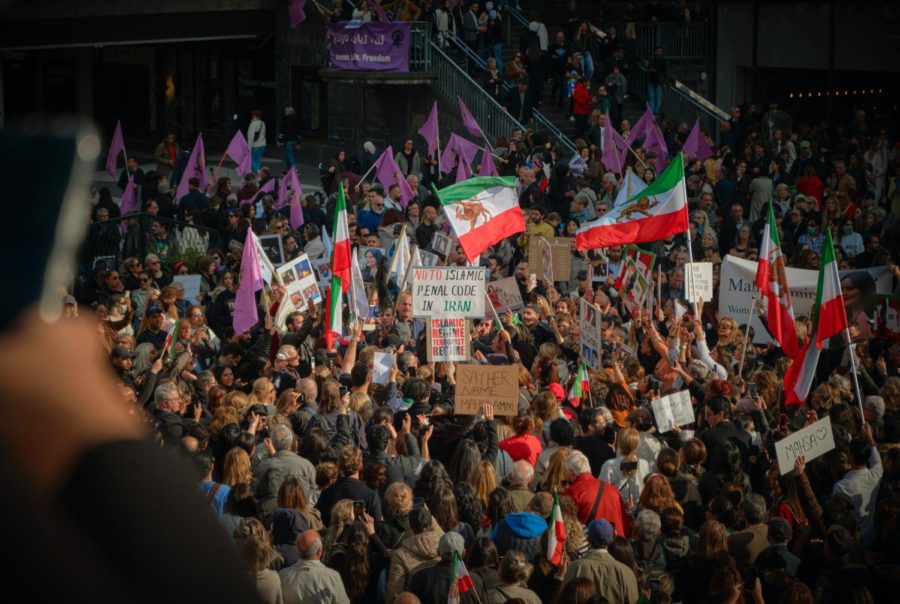Mahsa Amini: A Women’s Death Sparks Protests Across Iran
October 4, 2022
On Tuesday, September 12th, 22-year-old Mahsa Amini was detained outside of a metro station by Iran’s morality police, due to violating the country’s dress code for women by wearing her hijab loosely. While different groups describe various accounts of what happened during the timeframe in which Amini was taken to a detention center for ‘reeducation’, it is confirmed that she fell into a coma only a few hours after being in custody. Only three days later on Friday, the 16th, Amini died, and protests against authorities have spread throughout many of Iran’s provinces.
Throughout Iran, dress codes are required by law for women in public. This includes wearing loose clothing to cover arms and legs, as well as head coverings for concealing hair, with one example being the hijab. It was because of this dress code violation that Amini was arrested and transported by a police van to a detention center. However, her death has led to widespread criticism and questioning of the morality police.
Details of the arrest seem to vary among different sources. Witnesses say that Amini was beaten by the officers. However, police have rejected these claims, with Brig-Gen Hossein Rahimi, head of the Tehran police force, expressing sympathy to Amini’s family, but also insisting she suffered no physical harm, saying, “The evidence shows that there was no negligence or inappropriate behavior on the part of the police.” Furthermore, with inquiries regarding her death, police claim Amini suffered either heart failure or a stroke, which they say is due to previous health conditions. To counter this, Amini’s family had said in an interview with a local media outlet that she was “fit and had no health problems,” suggesting she may have been harmed while in custody.
Since the incident, protests have spread across Iran, with many that have been touched by Amini’s death expressing their discontent with authorities. While protests were carried out in many different ways throughout the country, such as women removing their headscarves in opposition to the dress code, or mass demonstrations, many of these crowds have been met with violence from security forces. Although authorities haven’t released official figures yet, it is thought that dozens have been killed during the protests, and an unknown number, arrested.
To add to tensions, severe restrictions of social media sites and messaging platforms have been enforced by authorities for what they claim are security reasons. Nonetheless, many video clips of the protests have surfaced and even some celebrities have shared their thoughts online. For example, a member of Iran’s national football team, Ali Karimi, and Mehran Modiri, a comedian and television personality, have been supporting protests through social media, speaking out against the actions of the authorities.
While the support for protests, even as they are met with violence, is uplifting, it has not come without risks. Since the protests, many high-profile arrests have been made, and several journalists have been silenced by authorities. Niloufar Hamedi, one of the first to report on Amini’s hospitalization and death, was arrested in Iran’s capital, Tehran, and according to her husband, is in solitary confinement at the Evin prison in Tehran.
In light of the events unfolding within Iran, some attempts have been made to deescalate the situation. For example, many human rights organizations, along with the United States and European Union, have objected against the use of violence against protestors. Due to this, sanctions on the morality police for alleged abuses against women and demonstrators have been put in place by the United States. Additionally, a state investigation into Mahsa Amini’s death has been initiated and results will most likely be released in a few weeks.



